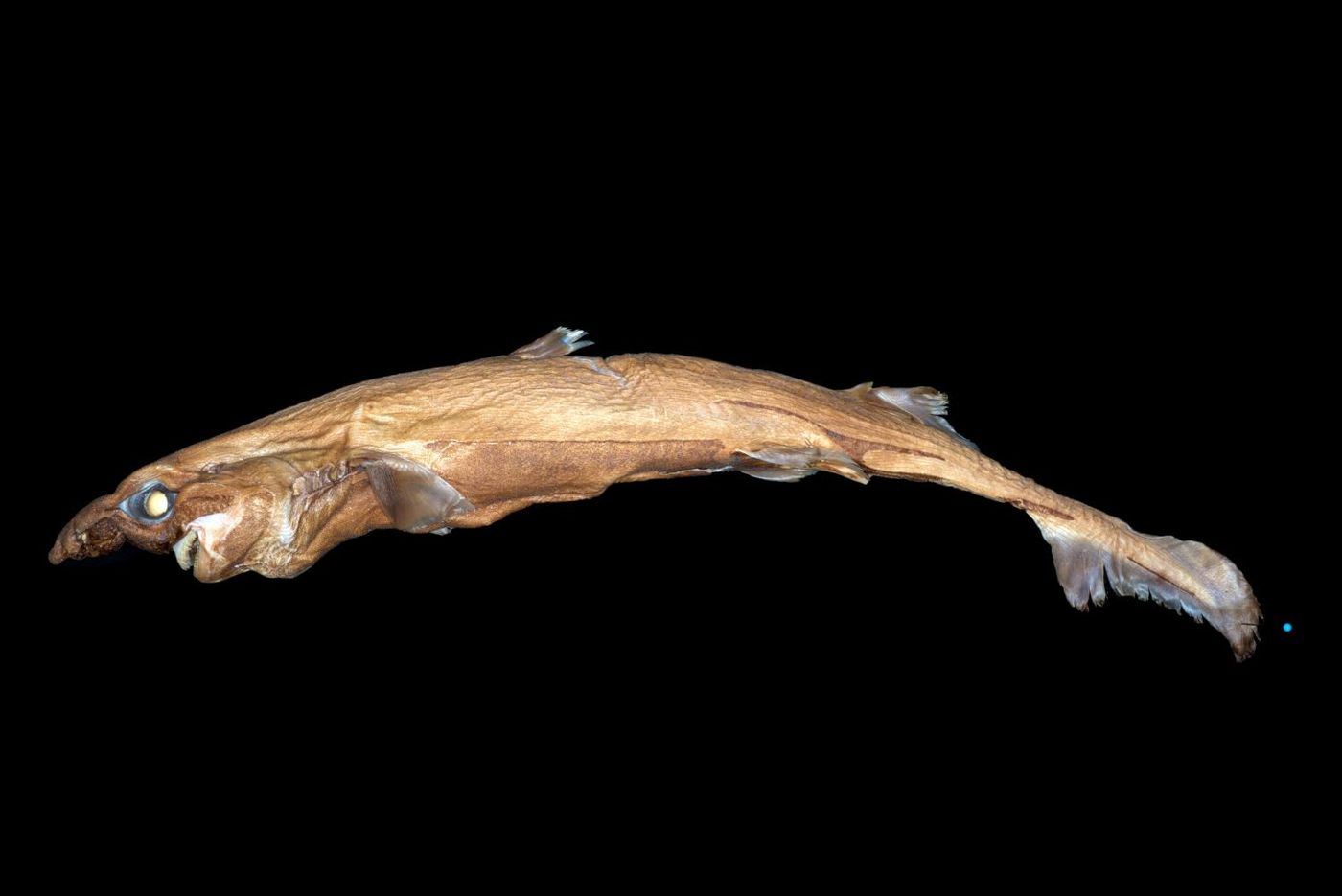Newly-Discovered Species of Miniature Shark Glows in the Dark
The first thing that comes to many people's minds when hearing the word “shark” is a large fish with massive, razor-sharp teeth that wants to eat you from the moment you jump into the ocean. On the other hand, the discovery of a new shark species is quite polarizing to that effect.
Published in the journal Zootaxa, researchers hailing from Florida Atlantic University describe Etmopterus lailae, a small shark species that, when fully grown, doesn’t exceed a foot in length or 2 pounds in weight.
Image Credit: Florida Atlantic University
Found off the coast of Hawaii, approximately 1,000 feet below the Pacific Ocean’s surface, this cute little shark happens to be a part of the lanturnshark family. As you can probably deduce from the family name, it has a glow-in-the-dark property known as bioluminescence.
Related: Research shows why some sharks 'shrug' when they swallow
Because the elusive shark species resides so deeply below the ocean’s surface, it isn’t readily accessible like other surface-dwelling sharks are. It took 17 years to identify Etmopterus lailae as a new species, and researchers have yet to spot another one like it in the wild.
“There are only about 450 known species of sharks worldwide, and you don’t come across a new species all that often,” said study co-author Stephen M. Kajiura, Ph.D.
“A large part of biodiversity is still unknown, so for us to stumble upon a tiny, new species of shark in a gigantic ocean is really thrilling. This species is very understudied because of its size and the fact that it lives in very deep water. They are not easily visible or accessible like so many other sharks.”
Related: All-white great white shark washes up in Australia
Worthy of note, the newly-discovered species exhibits a large schnoz and a head unlike most other sharks’. Since it’s such a deep-ocean dweller, the large nose is thought to be critical for finding prey. At these depths, sunlight is scarce, so the use of vision for finding prey is out the window.
“The unique features and characteristics of this new species really sets it apart from the other Lanternsharks,” Kajiura explained. “For one thing, it has a strange head shape and an unusually large and bulgy snout where its nostrils and olfactory organs are located. These creatures are living in a deep-sea environment with almost no light, so they need to have a big sniffer to find food.”
According to the researchers, however, these aren’t the only things that set it apart. It also exhibits unusual flank markings, a snout with a naked underside (no scales), and a distinct number of teeth and vertebrae.
Also read: Shark Week: Reloaded
Without being able to study the creature in its natural habitat, we know very little about Etmopterus lailae or its way of life. It also highlights how very little we know about what's hiding in our oceans. This complication could change in the future, but all we can do right now is hope it won’t take an additional 17 years for that day to come.
Source: Florida Atlantic University
-
MAY 17, 2024PCR for 35% Less-Now!
- See More
-
MAY 17, 2024The Thomas Experts Series & The Thomas Center Labs
-
MAY 23, 2024For the Love of Digital PCR 2024
-
JUN 06, 2024The Future of Scientific Conferencing
- See More




















































